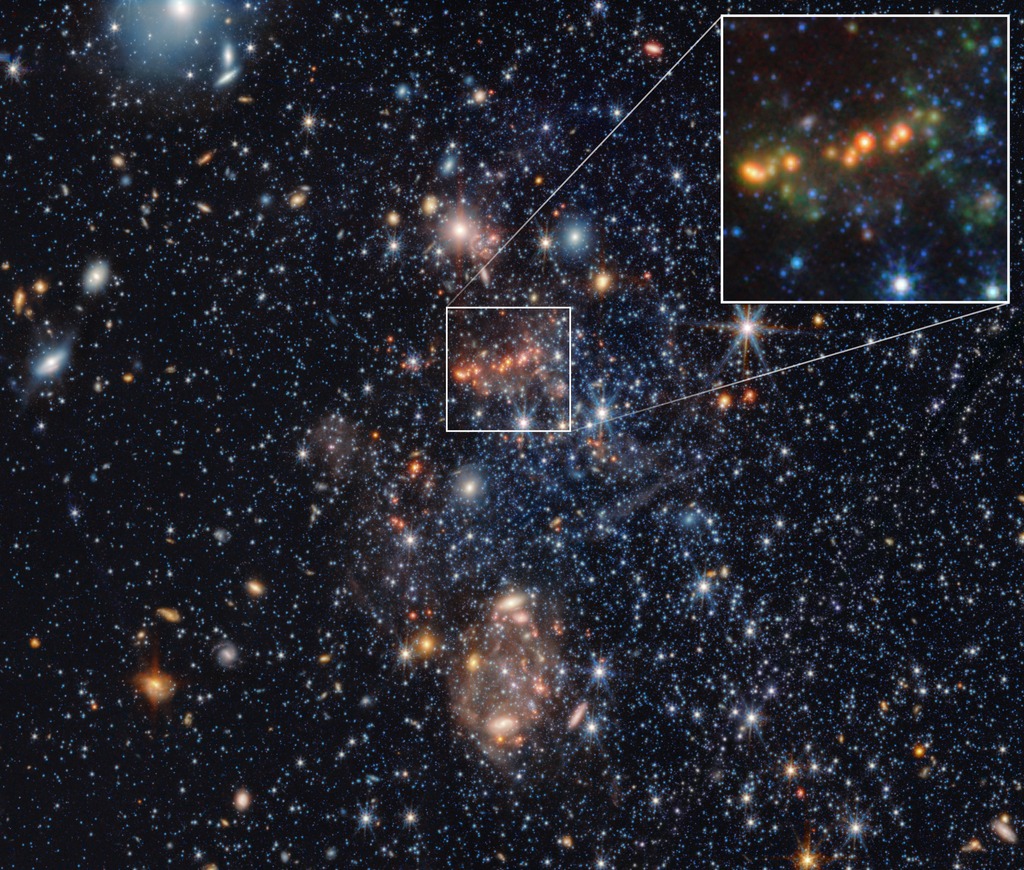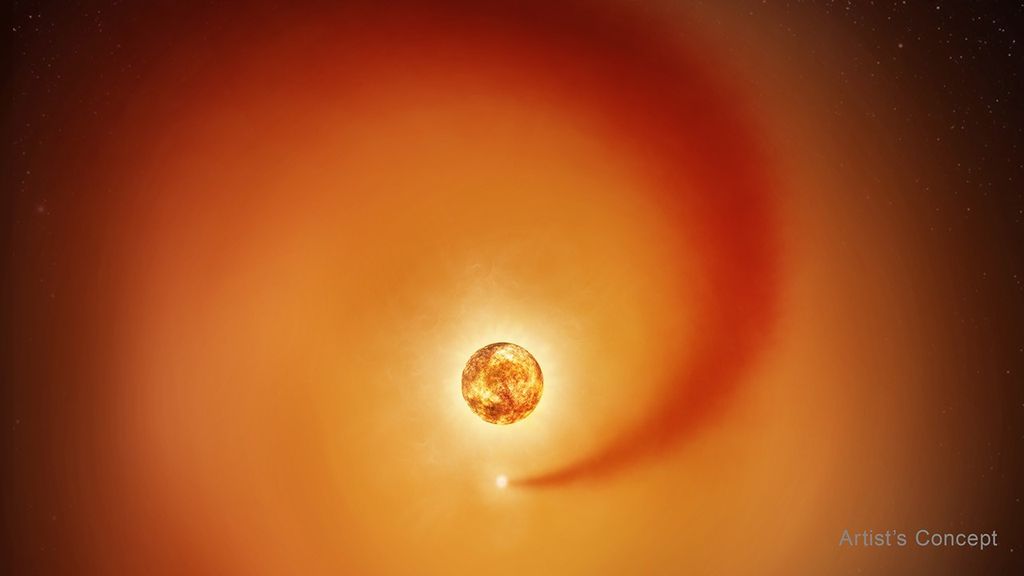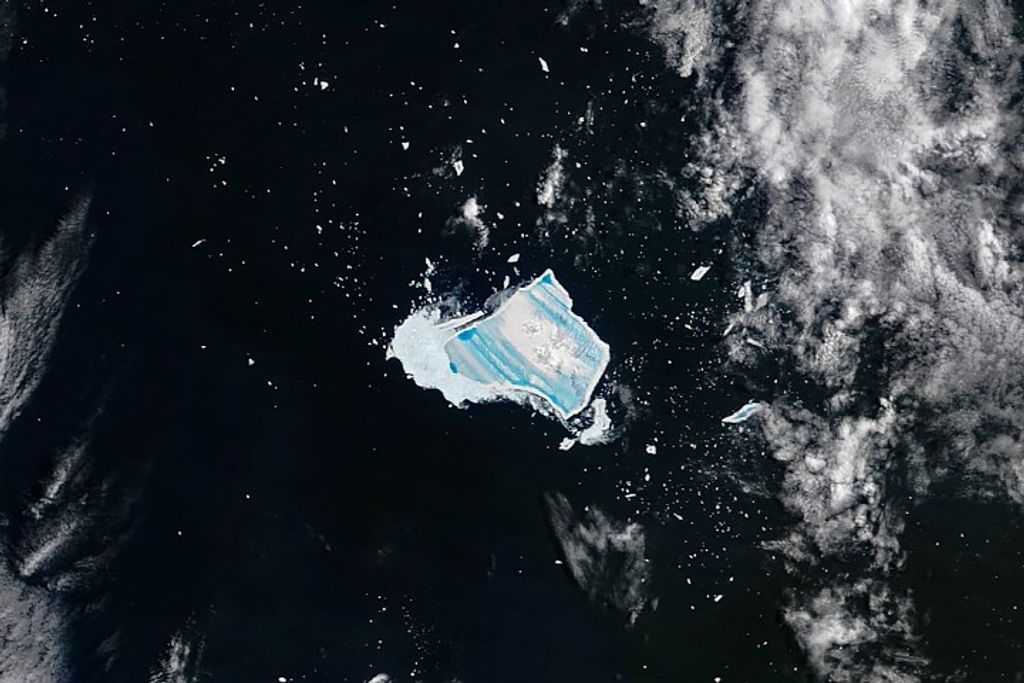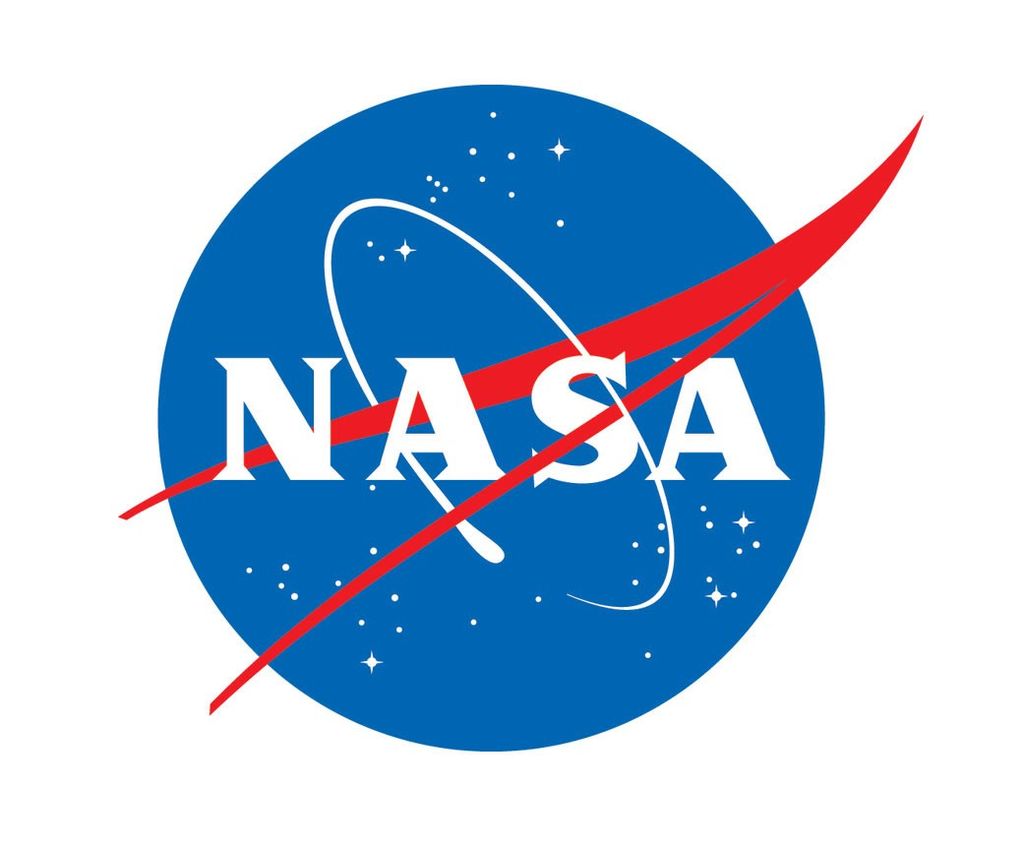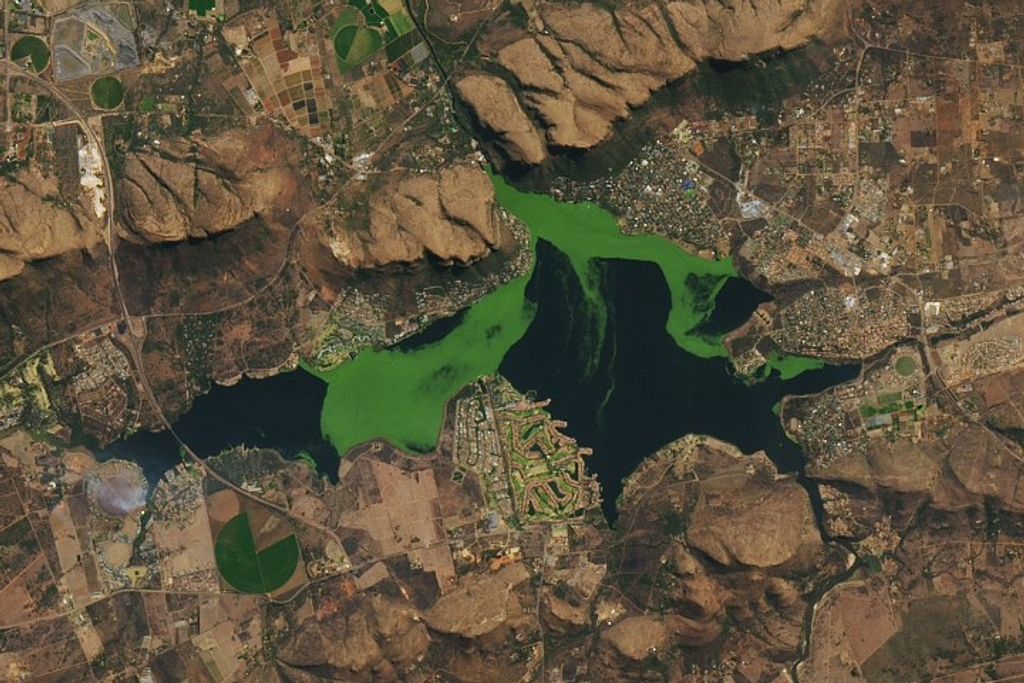1 min read
Neptune Auroras (Hubble and Webb Image)

At the left, an enhanced-color image of Neptune from NASA’s Hubble Space Telescope. At the right, that image is combined with data from NASA’s James Webb Space Telescope. The cyan splotches, which represent auroral activity, and white clouds, are data from Webb’s Near-Infrared Spectrograph (NIRSpec), overlayed on top of the full image of the planet from Hubble’s Wide Field Camera 3.
Auroras occur when energetic particles, often originating from the Sun, become trapped in a planet’s magnetic field and eventually strike the upper atmosphere. The energy released during these collisions creates the signature glow.
Webb’s detection of auroras on Neptune is the first time astronomers have captured direct evidence of this phenomenon on the planet most distant from the Sun. In addition to the visible glow in the imagery, the spectrum from Webb also found an extremely prominent emission line signifying the presence of the trihydrogen cation (H3+), which can be created in auroras.
Neptune’s auroras do not occur at the northern and southern poles of the planet, where we see auroras on planets like Earth and Jupiter, because of the strange nature of Neptune’s magnetic field, which is tilted by 47 degrees from the planet’s rotational axis.
Webb’s study of Neptune also revealed that the planet’s upper atmosphere has cooled by several hundred degrees, likely the reason that Neptune’s auroras have remained undetected for so long.
About the Data
- Data DescriptionData DescriptionProposal: A description of the observations, their scientific justification, and the links to the data available in the science archive.
Science Team: The astronomers who planned the observations and analyzed the data. "PI" refers to the Principal Investigator. - InstrumentInstrumentThe science instrument used to produce the data.WFC3/UVIS, NIRSpec
- Exposure DatesExposure DatesThe date(s) that the telescope made its observations and the total exposure time.21-22 June 2023
- FiltersFiltersThe camera filters that were used in the science observations.Hubble> F467M, F763M, F845M Webb> G395/F290LP
- Object NameObject NameA name or catalog number that astronomers use to identify an astronomical object.Neptune
- Object DescriptionObject DescriptionThe type of astronomical object.Neptune aurorae
- Release DateMarch 26, 2025
- Science ReleaseNASA’s Webb Captures Neptune’s Auroras For First Time
- CreditImage: NASA, ESA, CSA, STScI, Heidi Hammel (AURA), Henrik Melin (Northumbria University), Leigh Fletcher (University of Leicester), Stefanie Milam (NASA-GSFC)

These images are a composite of separate exposures acquired by the Hubble Space Telescope and James Webb Space Telescope using the WFC3 and NIRSpec instruments respectively. Several filters were used to sample different wavelength ranges. The color results from assigning different hues (colors) to each monochromatic (grayscale) image associated with an individual filter. In this case, the assigned colors are: Hubble> Blue: F476, Green: F763M, Red: F845M Webb> Cyan: G395/F290LP H3+, Grayscale: G395/F290LP 3μm clouds
Share
Details
Laura Betz
NASA’s Goddard Space Flight Center
Greenbelt, Maryland
laura.e.betz@nasa.gov
NASA, ESA, CSA, STScI, Heidi Hammel (AURA), Henrik Melin (Northumbria University), Leigh Fletcher (University of Leicester), Stefanie Milam (NASA-GSFC)

